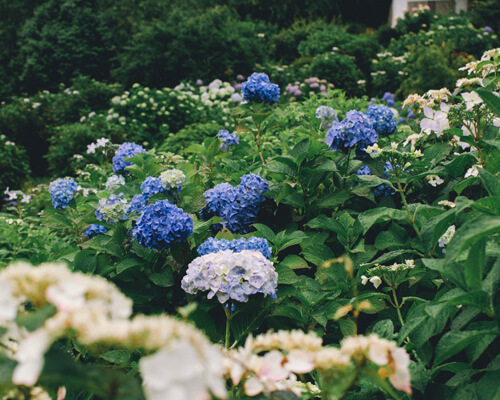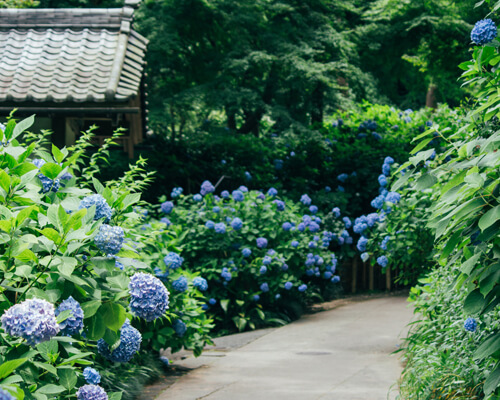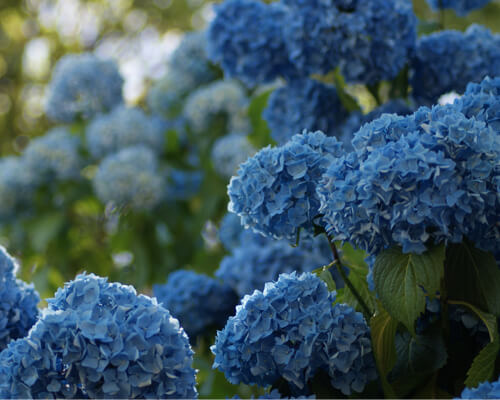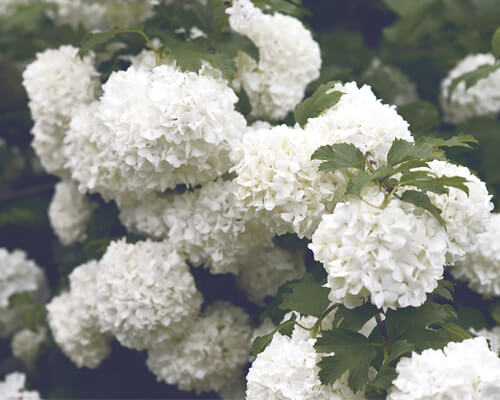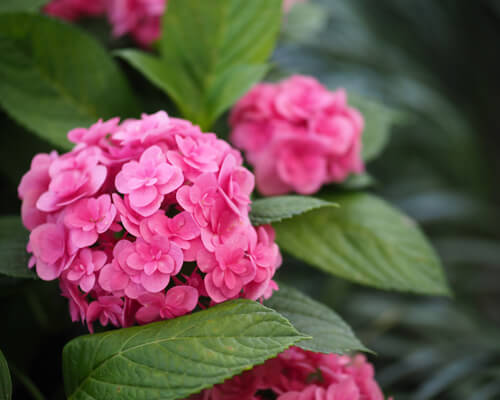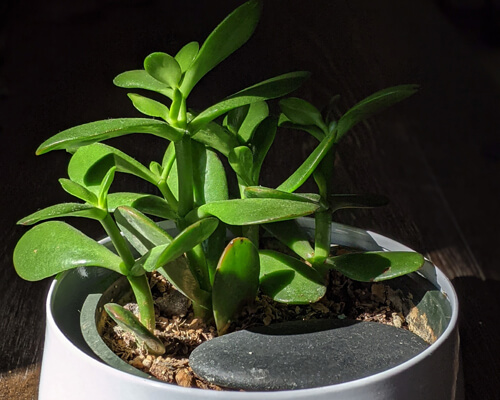How to Get Orchid to Bloom?

Do you have an orchid that’s been stubbornly refusing to bloom? Are all your efforts of trying to make it flower in vain?
You are not alone. Many gardeners find it difficult to get their orchids to show off their beautiful blooms.
But no need to worry, if you’re serious about making your orchid come into full bloom, then you’ve landed at the right place.
I promise that if you follow these easy steps, your beloved orchid will be blossoming in no time.
So let’s dive in and learn how best we can prepare our precious flower for a healthy burst of vibrant blooms.
When do orchids bloom
Orchids typically bloom in early spring, with the exact timing varying depending on the species.
Generally, the cycle begins with leaf growth during the summer and early fall months, followed by a bloom spike in late fall or early winter.
This is then followed by blooming throughout early spring, which can last for several months before the blooms wilt and fall off.
Some orchid species may bloom twice a year if provided with ideal conditions.
Commonly, these conditions include ample water and light, as well as fertilizer to help maintain healthy foliage and encourage long-lasting flower displays.
Blooms usually appear at night and are fully open by morning, providing bright colors and fragrances as they reach their peak in the daytime.
The flowers will also last longer if given cooler temperatures at night to help retain their vibrance and shape.
For many species of orchid, it can take years of proper care before they will even produce flowers.
However, once they start flowering regularly most varieties will bloom from spring through late summer each year if given adequate care.
How to get orchid to bloom
Method 1. Providing the Right Growth Environment
When attempting to get an orchid to bloom, it is essential to provide the right growth environment.
Appropriate light intensity
The ideal light intensity for orchids should be bright but indirect sunlight that is filtered through sheer curtains or blinds.
The best time for orchids to receive sunlight should be about 4-6 hours per day.
Making sure that the plant does not receive too much intense direct sunlight is important so as not to burn its delicate leaves.
For artificial lighting, any fluorescent light will do as long as it’s placed at least 18 inches away from the orchid flowers.
It is also important to rotate your orchid once in a while so all parts of the plant can get equal exposure.
The right amount of water
Watering your orchid with warm water in moderation is necessary for its healthy growth.
When watering an orchid, it should be done thoroughly until water drains out of the pot’s bottom holes.
However, you should avoid over-watering, as this can lead to root rot and the potential death of your plant.
After watering, make sure that you allow enough time for the soil to dry before re-watering again.
A general rule of thumb regarding watering schedules should be every 5-7 days depending on how much sunlight and temperature your orchid receives each day.
Maintaining a humid atmosphere
Humidity levels play a major factor in successfully getting an orchid to bloom as they prefer moist air but not necessarily wet soil.
Humidity levels between 60%-80% are ideal conditions for most species while air temperatures are around 70°F.
It can help maintain proper humidity levels indoors if there are any difficulties regulating them naturally by other means.
For example, spraying plants with distilled water daily, using humidifiers, placing plants near trays filled with pebbles and water, etc.
Additionally, fertilizing your orchid every six weeks can help promote healthy blooming habits and ensure successful re-flowering seasons annually.
Method 2. Triggering Blooms
Consider using full-spectrum lights
Full-spectrum lights mimic natural sunlight and can help orchids to bloom.
They are specifically designed for plants, such as orchids, that require intense light to flower.
These lights should be used for 12 hours a day and placed within 6 inches of the plant to ensure optimal growth and blooming.
Use a fertilizer formulated for orchids
Orchid fertilizers typically contain more phosphorus than other fertilizers, which is important for inducing blooms on your orchid.
Applying fertilize once a month during the active growing season, when orchids are actively producing new leaves and flowers, usually between late spring and early fall in temperate climates.
It’s best to avoid fertilizing your orchid during winter as this can cause it to become stressed out and fail to flower properly.
Drop the temperature by 10 degrees at night
Orchids thrive in temperatures that mimic their natural environment, which is cooler at night than during the day.
So try dropping the temperature around your orchid by 10 degrees at night time to promote blooming.
You can use a fan to blow on the orchids, but make sure it doesn’t blow directly onto it as this can lead to damage to delicate petals and stamens.
Ventilate the area where your orchid is kept
Proper ventilation helps ensure optimal humidity levels around an orchid, so that it can absorb nutrients from its surroundings efficiently and bloom properly.
If possible, place your orchid near an open window where there is some natural airflow present. Otherwise, use a fan in combination with other ventilation methods.
Such as air vents (located high up on walls) to increase air movement around your plant’s roots. Helping them stay healthy and encouraging blooms from buds already present on the plant’s stem(s).
Monitor soil moisture levels carefully
Orchids do not like sitting in waterlogged soil so make sure you check soil moisture regularly with a finger test.
This involves poking a finger into the top inch of soil surrounding an orchid’s root ball just before watering.
Checking this to assess how much moisture is present in the soil. Without overwatering which could lead to fungal issues developing such as root rot when left unchecked.
Method 3. Diagnosing Your Orchid
Pay attention to the season
Orchids naturally bloom at certain times of the year, depending on their species.
The majority of orchid species need to experience a period of cool temperatures and short daylight hours to begin blooming.
This process is known as “vernalization” and typically occurs during winter months.
If your orchid is not blooming, it may be necessary to adjust the conditions in its environment by providing artificial light and temperature control to achieve vernalization.
Check the leaf color
Orchid leaves can be an excellent indicator of overall health and vigor, as well as potential bloom cycles.
Healthy orchids will have bright green foliage with no yellowing or discoloration.
If leaves are pale green or yellowish, this may indicate a lack of nutrients that can prevent blooming from occurring.
In addition, if leaf tips are dry and shriveled this may be an indication of dehydration or insufficient humidity levels.
You should correct all these indications before blooming can occur.
Check the stems and leaves for signs of dehydration
Another important factor to consider when trying to get an orchid to bloom is its water requirements.
Dehydration can result in wilting and stunted growth which will hinder flowering.
If you notice any limpness in the stems or drooping foliage, it’s time to water.
Watering techniques vary between species but generally speaking when the surface soil feels dry it’s time for a drink.
Avoid keeping the soil constantly wet as this can cause root rot.
When watering always use room-temperature distilled water for best results.
Tap water contains minerals that can build up over time and harm your plant’s roots.
Evaluate the potting material
Depending on what kind of potting mix your orchid is planted in can also influence its ability to bloom successfully.
Different types of potting mixes provide varying levels of drainage, aeration, nutrients, etc., all of which play a part in whether your orchid receives enough oxygen and nourishment to flower properly.
Generally speaking, most commercial potting soils are suitable for most types of orchids.
However there are some specialty mixes designed specifically for specific varieties.
So make sure you’re using an appropriate potting medium for your particular species before attempting blooming.
How long do orchid blooms last
Orchid blooms can last anywhere from 6-10 weeks on average. However, the exact duration depends on many factors like the orchid’s species and its growing environment.
For example, some tropical varieties may bloom for as long as two months while others may only flower for a few weeks.
With proper care and ideal conditions, an orchid may continue to produce flowers over an extended period.
Providing adequate lighting and a comfortable temperature range, as well as providing appropriate fertilization and watering the orchid at regular intervals, can help ensure that it continues to flower for 8-12 weeks or longer.
In addition, keeping dead petals and leaves trimmed away from the plant will help promote further growth and blooming.
How to care for orchids after they bloom
Re-pot the orchid
After the orchid has finished blooming, it is important to re-pot the plant to ensure it remains healthy and can continue to flower.
To do this, carefully remove the old potting mix from around the roots of the orchid, taking care not to damage any fragile new root growth.
Rinse off the rest of the old soil and inspect the roots for any signs of disease or infestation.
Once these have been removed, place the orchid in a new pot with a fresh potting mix designed specifically for orchids and make sure that there are adequate drainage holes at the bottom of the pot so that excess water can escape.
Provide ample light
Orchids require bright but indirect light to sustain healthy growth, so it is important to provide your orchid with plenty of light after it has finished blooming.
Try placing your orchid near a south-facing window where it will get access to plenty of sunshine throughout most of the day.
But be careful not to place it directly in front of a window as direct sunlight can cause leaf burn and other problems for your plant.
You may also consider investing in grow lights if you want more control over how much light your plant receives.
However, be sure not to leave them on longer than 12 hours per day as this can lead to stunted growth and other issues with your orchid’s health.
Water regularly
Orchids require regular watering while they are actively growing and flowering.
However, once they have stopped blooming you need to adjust your watering schedule accordingly.
During its dormant period (after flowering), an orchid should be watered once every two weeks.
But during summer months when temperatures are higher, you may need to water more frequently depending on how dry your environment is.
When watering an orchid always use lukewarm water and never allow your plant’s roots to sit in standing water as this can cause root rot and other diseases that can harm its health.
Fertilize every 2-4 weeks
Fertilizing an orchid after it has finished blooming is essential for maintaining its health and encouraging further flowering in future years.
A balanced fertilizer like a 10-10-10 liquid formula mixed with lukewarm water should be applied every two weeks during the spring/summer months.
And then decreased down to every four weeks during fall/winter months so as not to overwhelm your plant’s system with too many nutrients all at once.
Be sure that all fertilizer residue is thoroughly washed off after application as high concentrations can cause leaf burn when exposed directly to foliage
Prune away dead flowers & leaves
After an orchid finishes blooming, you must prune away any dead flowers and leaves that remain on the plant.
So as not to encourage disease to build up within them, which could spread elsewhere on your plant’s body if left unaddressed for too long.
Use clean scissors when pruning away dead matter from your orchid.
Remember always cut back no further than ¼ inch away from where live tissue begins so as not to risk damaging healthy parts of your plants.
Conclusion
Taking proper care of your orchids is essential if you want them to produce beautiful blooms.
To help your orchids bloom more consistently, consider providing adequate humidity, high light levels, appropriate fertilization throughout the year, and a reasonable temperature range.
Additionally, while many people assume they are difficult to maintain, it pays to remember that orchid plants have evolved in tropical climates and when grown in their native environment they will thrive.
Ultimately, if you create the right environmental conditions, your orchid blooms should be lush and vibrant all year round.
If you follow our tips on nurturing and growing your plants, you can reward yourself with an awe-inspiring floral display for years to come.
So don’t wait any longer. Take the next step towards achieving glowing orchid blooms today.

